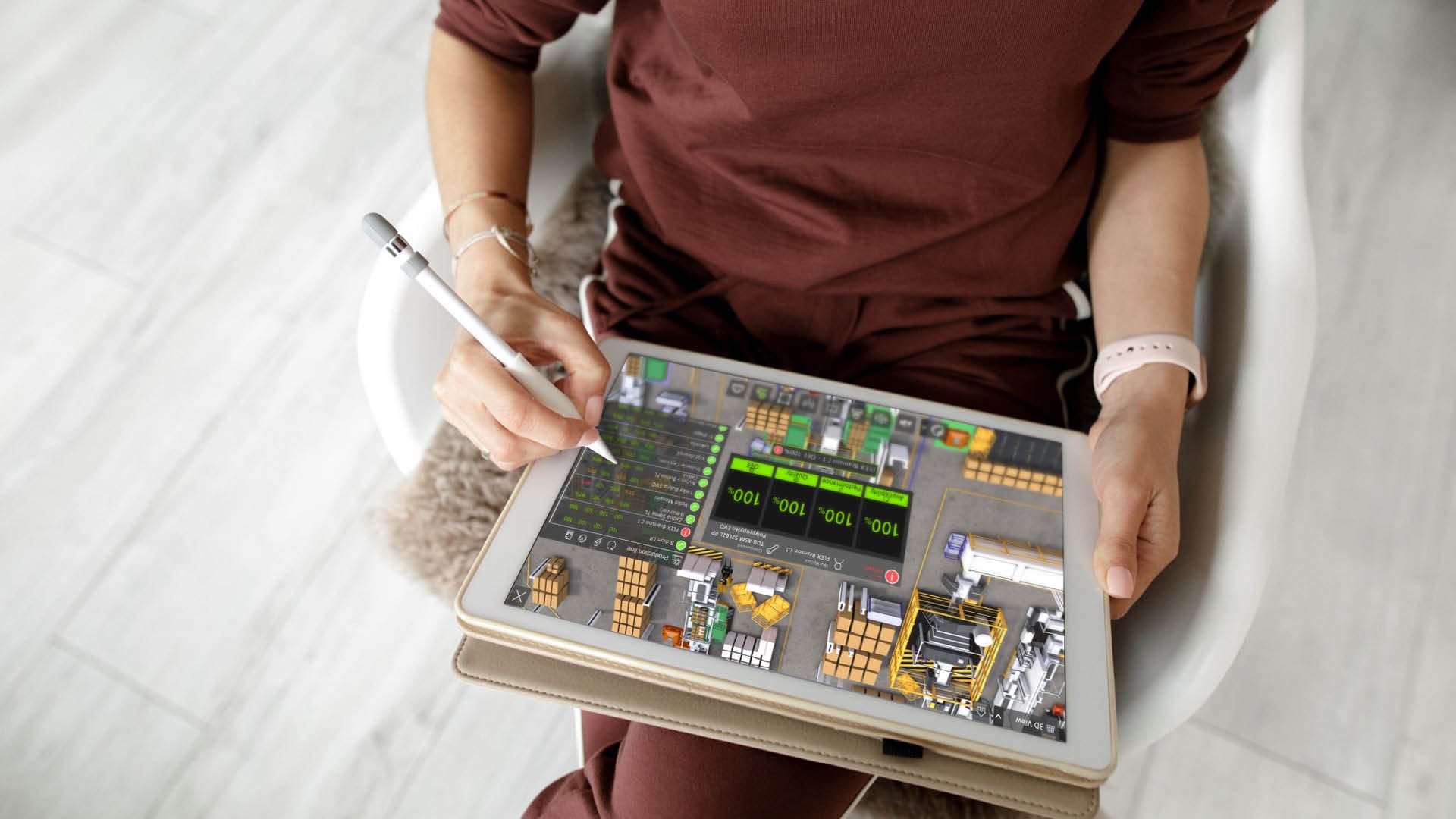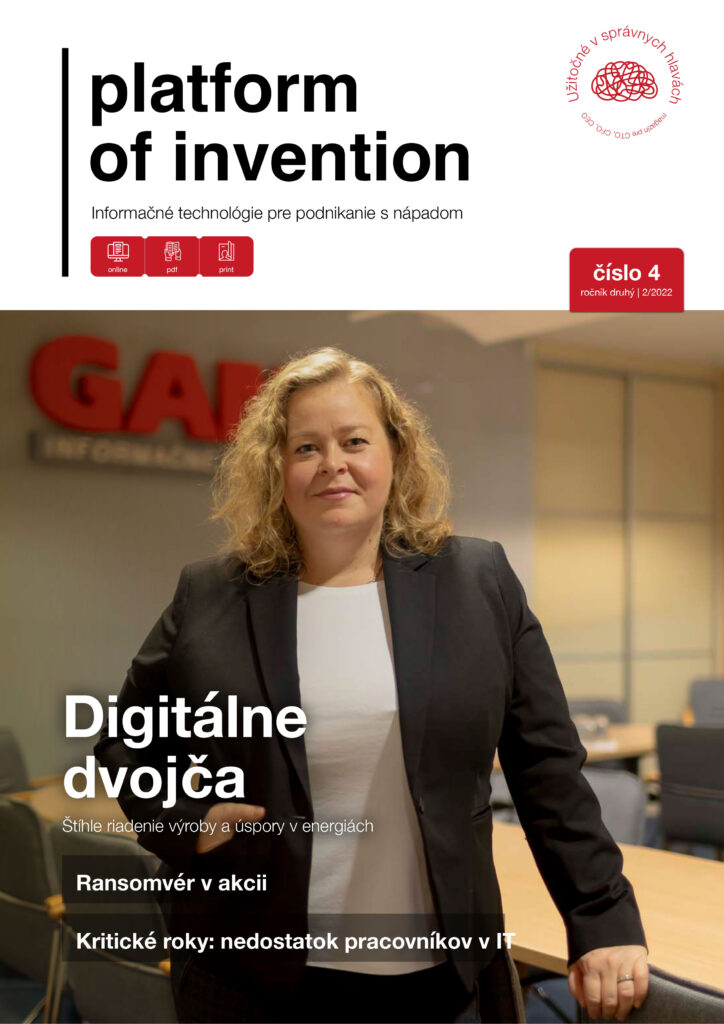While until recently digital twins were primarily the domain of planning and simulation in industry, today they are beginning to reach new areas.
In addition to real-time data display, it is already involved in the construction of entire city blocks, scanning and monitoring of existing objects and, of course, in the area of cyber security.
The foundation of lean manufacturing is the democratisation of access to information about an organisation’s performance. In the case of manufacturing plants, this mainly concerns data on actual production (OEE, data from MES, WMS, ERP systems), logistics, inventories and, today, very topically, consumption of various types of media. And not just electricity, although that is still key. The digital twin makes it possible to offer live data in 3D space, giving the data a completely new context, the so-called “spatialIy oriented dataset”.
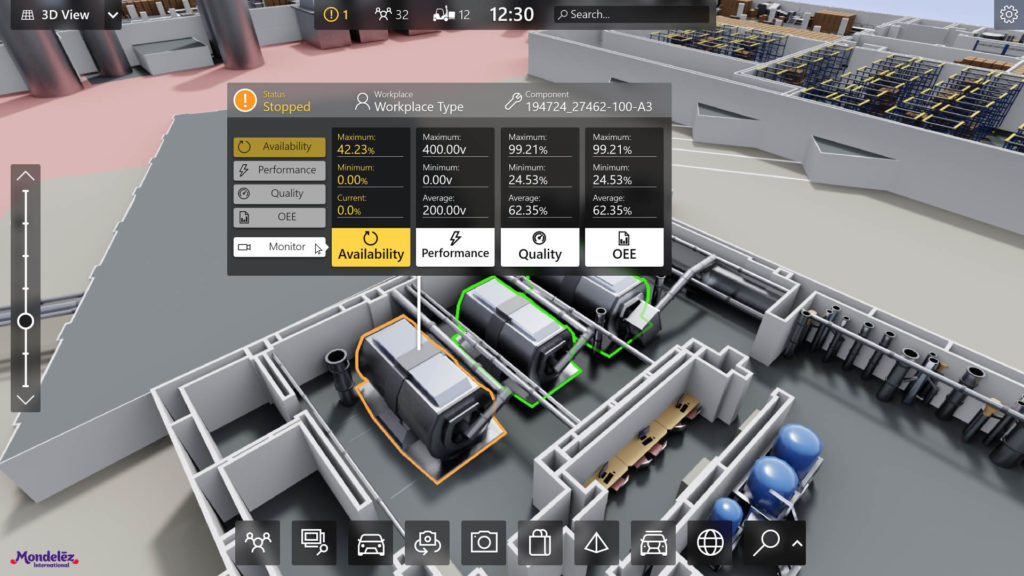
It is this combination of different data sources that brings savings in places where they can hardly be expected. In analysis, fleet reductions, logistics staff reductions and other straightforward savings are usually the logical expectations. Seeing real-time, instantaneous fleet utilization in conjunction with history serves to do just that. However, few people think of the connection to savings in production. If a minute of micro-downtime costs €1,000 and such downtime totals 20 minutes a day, removing it will not translate into any savings, but it will increase capacity ‘for free’. For example, a continuous supply of production lines allows a reduction in the speed of trolleys, which has the effect of reducing stress and safety risks and brings benefits back to the employees.
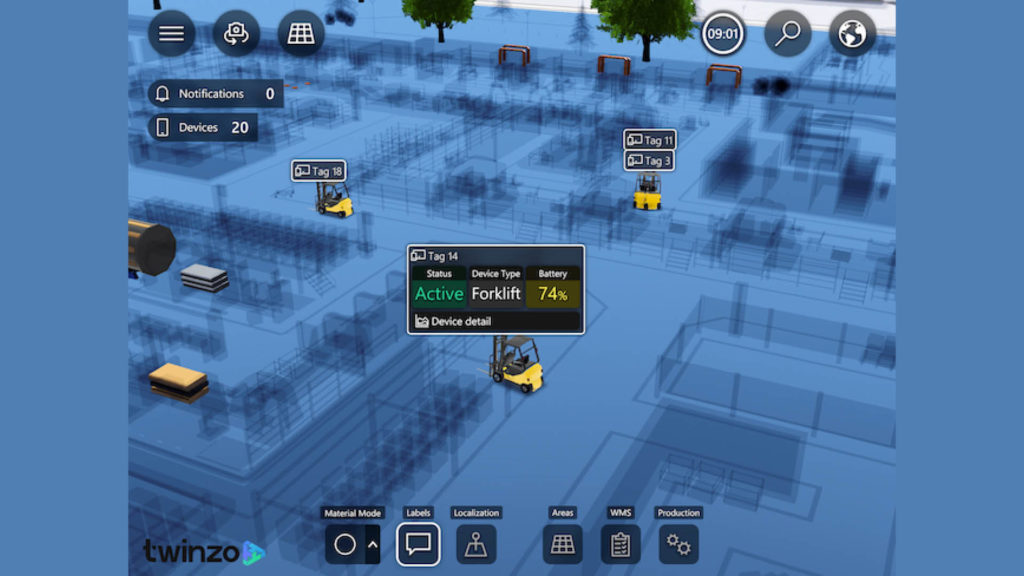
That was logistics, but what about production? Not every plant has its running data under one roof in one system. The data is usually distributed across a number of systems and the only link between them tends to be a manual transcription of the data into MS Excel. It is this that can be replaced by a digital twin, as it does not distinguish between data sources or formats and allows such diversified data to be placed in space and time. The uneven running of production has a direct impact not only on consumption but also on the wear and tear on machinery. Equipment is usually designed for a certain number of production cycles, but it is assumed that production is even. The manufacturer does not assume that the machine will produce at the ‘right speed’ during the day, not run at all at the beginning of the night shift, and run at maximum speed at the end of the night shift. In addition to exceeding the 15-minute maximums, this of course has a negative impact on the machine and extends its payback time through unplanned and unwanted service. Through the digital twin, this entire situation can be visualized in a concrete 3D environment, whereby the responsible manager can react very quickly to the situation.
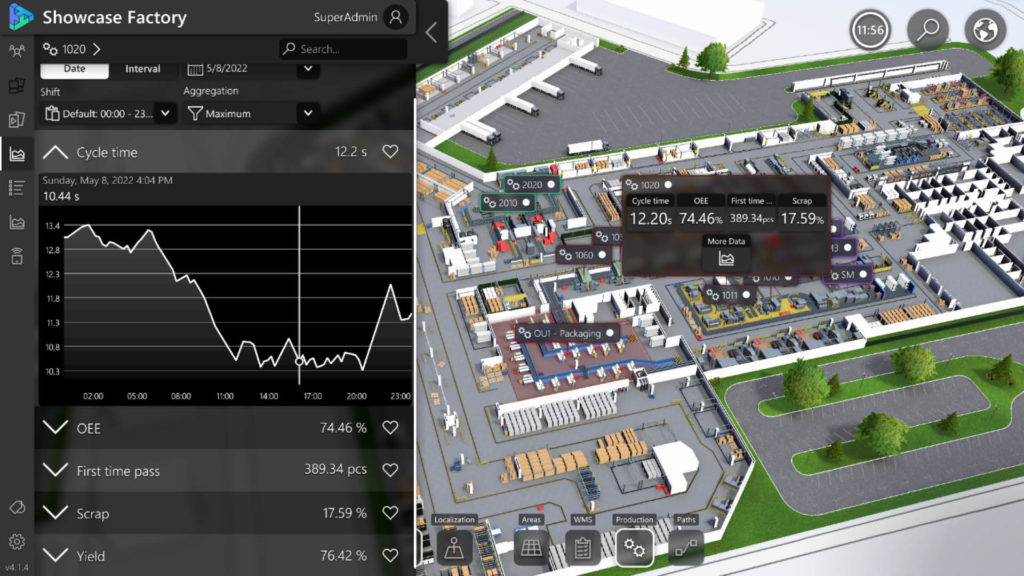
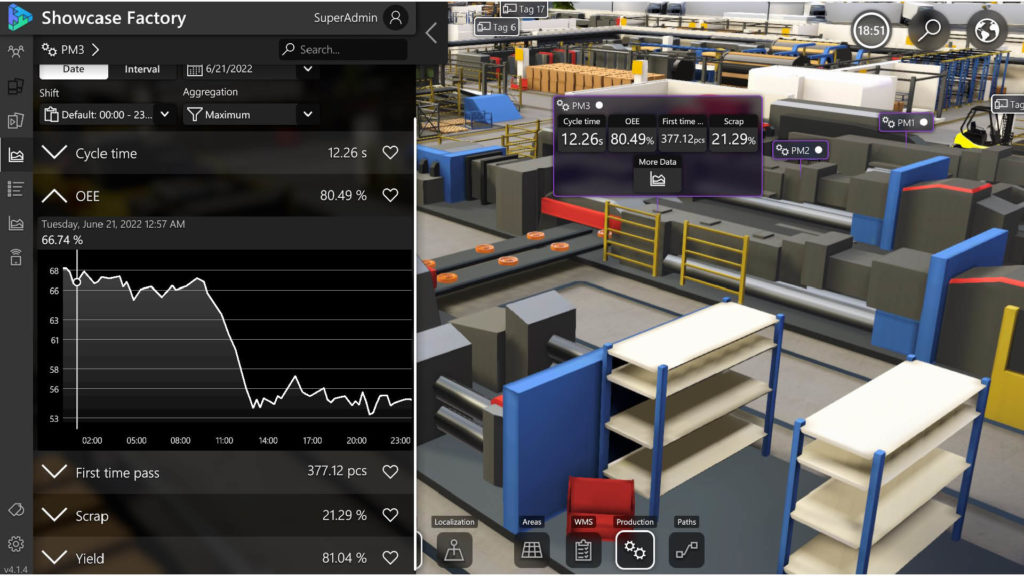
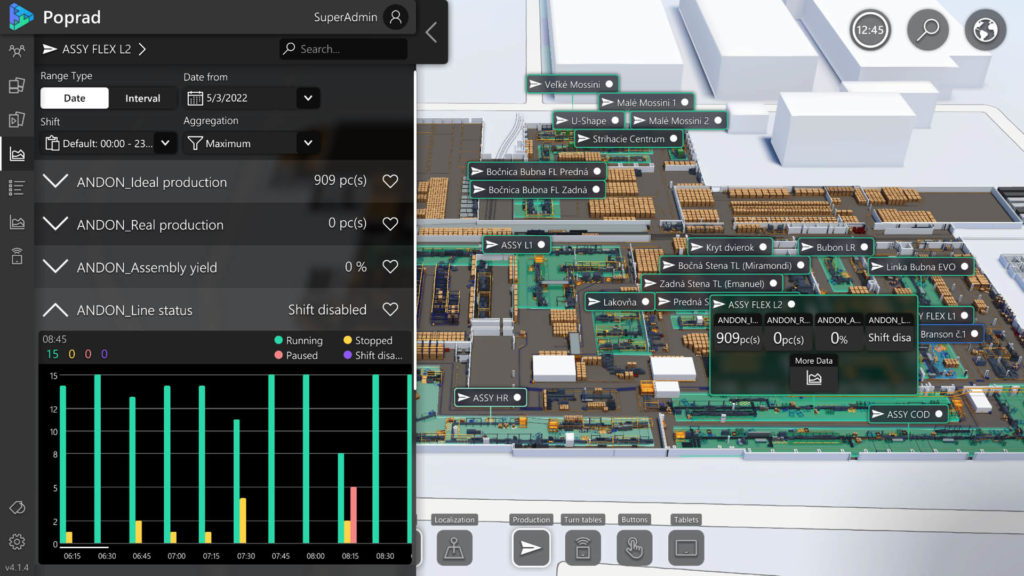
In the area of media consumption, the combination with environmental sensors is interesting, where it is possible to look for a relationship between e.g. outdoor temperature, indoor temperature and heating level. And all this in conjunction with open or closed gates for unloading and loading of goods or materials. Particularly in the winter months, open gates increase energy consumption through completely unnecessary ventilation. Similarly, machines that are not producing but are consuming 60% as if they were. The cause? The operators switched the machine on in the morning because they thought they were going to produce, but in reality production would not start until 3 hours later, and for those 3 hours the machine was running uselessly.
In order to ensure that production operations are secure, safety risks must also be monitored. Visualizing attacks, network infrastructure anomalies and attacks is a strong point of security systems, but the digital twin takes this area to a new dimension as well. The ability to see how a potential attack is unfolding, which device is being attacked, what the data traffic is like, and so on, are things that are not at all common in this area. The digital twin allows a faster decision based on the correlation of different data sources as to whether it is indeed a cyber security incident or a machine failure caused by another variable. For example, just keeping track of which machine is where and on which port it is connected to is very tedious, and moving around plants also takes valuable time. Making data visible to different levels of plant management and turning it into relevant information is therefore the key to lean manufacturing, which can then react to changes more flexibly and not just rely on a plan, which is becoming harder and harder to keep these days.
Through the digital twin, you can monitor any type of IoT or IIoT sensor, database and data flow, process or workflow. A business owner or manager can thus indulge in the comfort of making decisions even from a location on the other side of the world by visualizing how he or she monitors any kind of technology, its efficiency, and its functionality in real time. All it takes is one click on a digital twin, for example of his production hall, on a mobile device.
